#native american practices
Explore tagged Tumblr posts
Video
youtube
#fave#controlled burns#controlled fires#indigenous practices#native american practices#colonization#traditional ecological knowledge#indigenous science
3 notes
·
View notes
Text
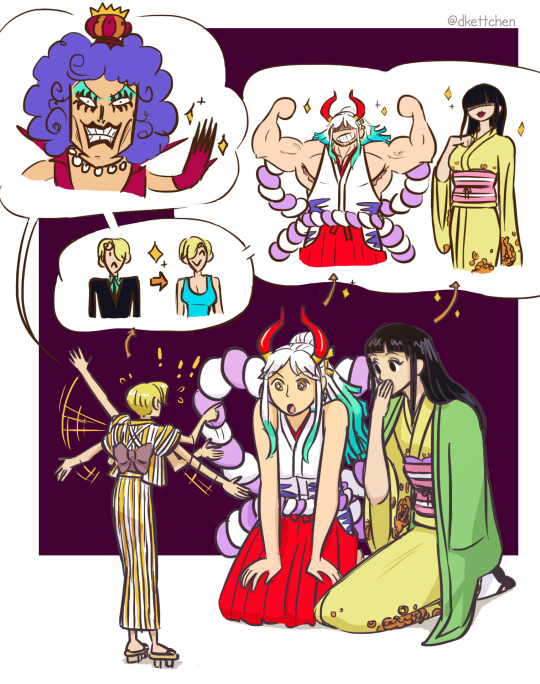
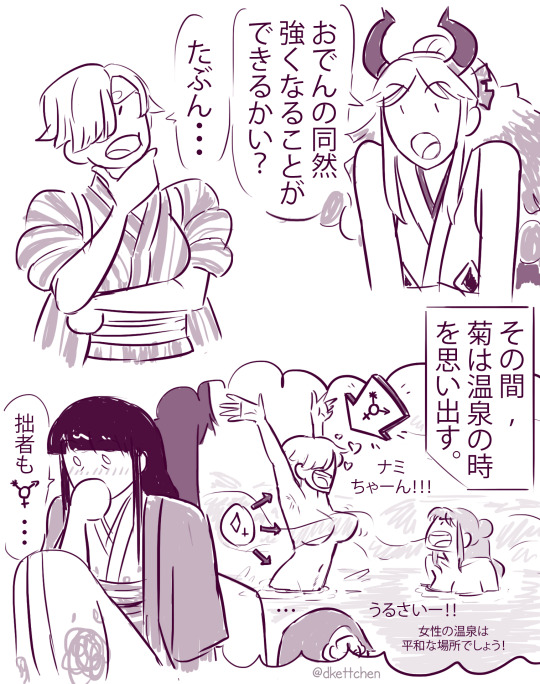
she would've told them unlike her canon! version who decided not to be an ally smh
#one piece#trans!sanji#sanji#kiku#yamato#ワンピース#I'm practicing my japanese shhhhhh#(日本語のペラペラ人:俺は文法とか書く方とか間違ったら教えてください😅ありがとうございます)#translation:#Yamato: I'll be able to get as strong as Oden?#Sanji: Probably... 🤔#[meanwhile Kiku is remembering the time in the hot spring]#(Sanji: Nami-chan!!!)#(Nami: Shut up!! The women's bath is supposed to be a peaceful place!)#Kiku: I am also ⚧️ ... o.o#(y'all english speakers had me all to yourselves for a decade it's about time I start to also sometimes make stuff in my next language lol#notably for media *from* that language#same as it made sense to make fan content in english for [american superhero franchise we don't talk abt anymore] back in the day#(happy seasonal reminder that Ren Is Not A Native English Speaker and This Is My 5th Language hi 😅))#while looking up reference for this I learnt that the straps to tie back the kimono sleeves are called tasuki#also I decided yamato get big muscles cause he got them kaido genes in im (I also gave him his dad's young-man-facial hair)#the more I do transition projections for one piece characters while tryna adhere to the style the more I learn that sometimes stylisation#uses bones less as literal determinants for where things go and just kinda exaggerates shapes based on vibes alone instead#meaning trans characters' bones wouldn't literally stay looking the same in that stylisation in the way they do irl#they'd get exaggerated differently based on what the surrounding stuff is doing#I still think oda's transition demonstration when we first met iva was unreasonable even with that in mind tho
2K notes
·
View notes
Text
I graduate college so I don't have to write essays or do research anymore.
And then I instantly get sucked into research so I can write a historical au.
#this is about despair#of course it is#if my brain wont write words then i will read words#im making better notes than i did for my theory courses#love the US educational system...they beat you into the perfect students and it never leaves you#also shows yall how bad i was at research when i had to do it because i JUST learned about the national archive#like.....Ive just read a whole book for free#i mean i had to sacrifice my spine to do it but she was already dead so its fine#i now know a light amount of information about this topic and i intend to look up more#yall catch me watching youtube videos about historical leather braiding practices#the most fun im having with this au is that i took courses on american history and modern history#but all of those classes conveniently skipped over all information about Mexico (save for “faught for texas”)#and now i get to learn all of his amazing culture and history#and also native history!!!!!#native folklore is so cool wtf?!?!#anyways im having so much fun learning all these niche things just so my minecraft youtuber can bring it up for two sentences in my fanfic#wild ride
57 notes
·
View notes
Text
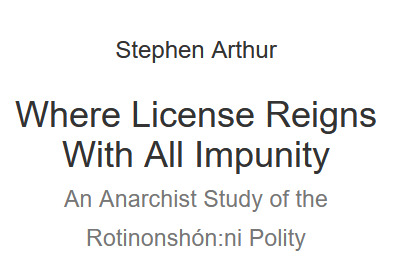
How Peace Came to the Rotinonshón:ni
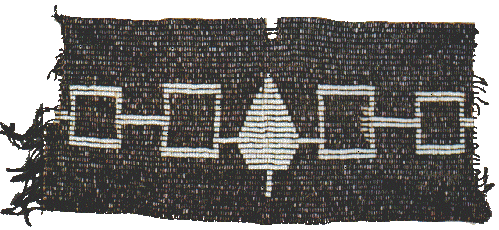
Aiewáhtha Wampum Belt [9]
The story of the formation of the Rotinonshón:ni has been passed down by oral tradition, by reciting the Kaianere’kó:wa. This recitation has been done in at least five similar languages and translated and transcribed into English in multiple versions. There are many variations, and no definitive version. [10]
In a version of the story common at Ohswé:ken, [11] Tekanawí:ta was born under mysterious circumstances to a Wendat mother, along the Bay of Quinte. [12] After a difficult childhood, Tekanawí:ta left his community to bring the message of peace to the Iroquois. He traveled south across Kaniatarí:io, where he encountered Aiewáhtha preparing a meal. Aiewáhtha, grieving for lost loved ones, was planning to a eat a man he had slain in vengenance. Tekanawí:ta conducted a condolence ceremony for Aiewáhtha, so as to end the blood feuding. He convinced Aiewáhtha to eat only of the flesh of deer, not man. Finally, he persuaded Aiewáhtha to give up war and to help him bring peace to the Iroquois.
According to a women’s oral tradition, [13] Tekanawí:ta then approached the head clan mother, Tsikónhsase.[14] Tsikónhsase, of the Kakwa:ko (Neutral) nation, had provisioned warriors and also administered disputes. [15] She agreed to support Tekanawí:ta’s efforts for peace if he agreed to codify into the Kaianere’kó:wa several powers and responsibilities for women: matrilineality of clans, the clan as the basis of popular sovereignty, and the collective ownership of agricultural land by women. Barbara Mann, Shotinontowane’á:ka author and professor of Native American Studies, views the underlying conflict of the era in terms of the material culture of production. She describes the conflict as one between women-led agriculturists and the cannibalistic hunters, led by Thatotáhrho. Tekanawí:ta’s role was to unite the warring factions, establish both farming and hunting as modes of production, and abolish cannibalism. [16]
Tekanawí:ta, Aiewáhtha and Tsikónhsase visited a series of Iroquois communities. Having gone to the Kanien’kehá:ka and gained their support, they visited the Oneniote’á:ka, gaining their acceptance as well. Next they visited the Ononta’kehá:ka, but were rebuffed by Thatotáhrho. They then gained the support of the Kaion’kehá:ka, and finally visited the westernmost nation—the Shotinontowane’á:ka. All of the Shotinontowane’á:ka were convinced except their two principal war chiefs; these were brought into agreement and designated as the ratihnhohanónhnha, the doorkeepers, responsible for protecting the long house of the Rotinonshón:ni from enemies to the west. Having convinced all of the Shotinontowane’á:ka, they returned to the Ononta’kehá:ka, and there was a mighty struggle with Thatotáhrho.[17] Tsikónhsase devised a solution, suggesting to Tekanawí:ta that the council fire of the Rotinonshón:ni could be with the Ononta’kehá:ka, and that Thatotáhrho should become its keeper. [18]
Tekanawí:ta had several other innovations for the Rotinonshón:ni polity. The fifty men who would make decisions through consensus at the council fire were named roiá:ner, and they would wear deer horns to represent that they had forsaken war and ate only the flesh of deer, not of men. The roiá:ner were to have skins “seven spans thick”: they would be patient, not easily offended. Tekanawí:ta named each of the roiá:ner, and stated that their names would be requickened when they died (or were removed from office) and returned to the clan mothers, the iotiiá:ner. The iotiiá:ner had the responsibility of selecting new roiá:ner, though never the son of the previous roiá:ner. The iotiiá:ner would also have the authority to recall roiá:ner from office. A provision was made for further speakers to be added to the council at Ononta’kehá:ka, men who had merit and had sprung up like a Pine Tree—“Ohnkaneto:ten.” The Ohnkaneto:ten would have voices but not votes; their appointment would die with them and not be transferred. Further, the great good way, the Kaianere’kó:wa, could be amended by “adding to the rafters” of the longhouse.
The weapons of war were buried beneath the tree of peace, so that there would be no further war among the nations of the Rotinonshón:ni. [19] (The English idiom, “burying the hatchet,” originates with the Rotinonshón:ni.) The tree’s four white roots of peace stretched to the cardinal directions, spreading the good tidings. There were rules for adoption of individuals and whole nations, to follow the roots, find shelter beneath the tree of peace, and join the Rotinonshón:ni. The condolence ceremony for those who were in grief was described, as well as the use of wampum. The Rotinonshón:ni would be guided by principles of “peace, power and righteousness.” The last issue that Tekanawí:ta resolved was about hunting territory: Tekanawí:ta declared that all Rotinonshón:ni would share the hunt and “eat of one bowl.” [20]
#anthropology#first nations#indigenous#Iroquois#mohawk#history#true history#Rotinonshón:ni Polity#Rotinonshón:ni#Rotinonshon:ni Polity#us politics#us history#Native Americans#Northeastern Anarchist#Six Nations#anarchism#anarchy#anarchist society#practical anarchy#practical anarchism#resistance#autonomy#revolution#communism#anti capitalist#anti capitalism#late stage capitalism#daily posts#libraries#leftism
28 notes
·
View notes
Text
It's actually fascinating what information organizations include for their demographics
My hospital profile lists me as lutheran (I'm not; my family are), and obviously they have jewish as a whole category. They have three different "types" of lutheran (I still don't know the differences between these), jainism, native american (I wonder if native religions have names; surely you can't lump them all as one big category when there are three lutheranisms listed?), and zoroastrianism (which is extra neat considering zoroastrians make up around 0.0029-0.01% of the population of the USA and we live in a very small town), and a few other options
But then the only ethnic background you can choose is ashkenazi jew? No sephardi, no mizrahi, just ashki? Yes, it is true that more ashki jews emigrated to the USA and therefore make up the majority of the population of USA jews, but ashki aren't the only "types" of jews with an ethnic background 😭
#jumblr#personal thoughts tag#long post#i'm not complaining about zoroastrianism being listed obviously; i am fully in support of its inclusion REGARDLESS of the numbers#i'm just confused that there is a level of consideration put into the list but then that effort drops off#i'm not educated enough on native religions so the parenthesis are me genuinely wondering#because it doesn't make sense to lump All Native Americans as one in any other sense (esp. with cultural practices)#so it only makes sense that that would apply to religious belief. no?#i applaud the effort. i want them to push that envelope even further if they want to be inclusive to patients on religious and ethnic bases#okay technically they include more ethnicities than ashki jew. those other ethnicities are 'other' and 'unknown'
26 notes
·
View notes
Text

Pose Test. 🪶
#punchout#punchoutwii#punchoutoc#art#digitalart#nativeamerican#nintendo#fanart#fanoc#shading#practice#gay#wvba#worldvideoboxingassociation#digital art#punch out#punch out wii#krita#native american#poc#person of color
9 notes
·
View notes
Text
Im not going to reblog the posts these are from because I don't want to give them reach, but if you see shit like this

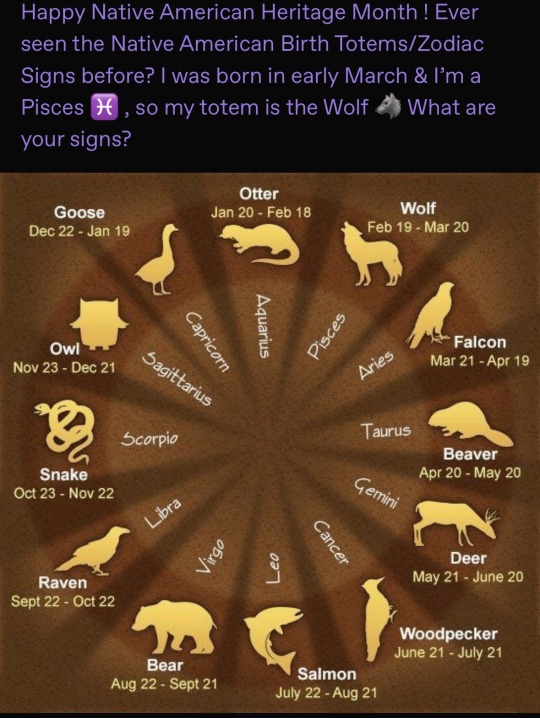
It's not fucking real! There is no "Native American zodiac" because Indigenous people in the americas are not a monolith! In the US alone there's more than 500 federally recognized groups, and thats just the ones the government has legitimized (and there are massive issues with a colonial government getting to decide who counts but thats another story entirely).
All of these groups have different beliefs systems, languages, systems of symbology, ect. Im sure there are Indigenous groups somewhere doing something like astrology because there are Indigenous groups all over the world doing a wide variety of practices, but I've never heard of anything like this. And even if there were a zodiac system being used by some Indigenous groups it would not be the "native american zodiac", it would be specific to whatever group was practicing it.
Im really tired of people making up new age bullshit, assigning it to "Native Americans" like we're all one thing, and then passing it around the internet like it's real. I did a cursory google search for this term and there's loads of sites talking bullshit about it like it's legit. The few named people I've found claiming to have knowledge about this don't mention connection to any specific group or band, they don't claim to be Indigenous at all, and Ive never heard anyone in my real life talking about anything like this.
So yeah, anyways if you see this know it's fake. I'm tired.
#native american zodiac#i know there are bigger problems in the world and bigger problems for Indigenous people but this shit is constant#our practices and systems of knowlege were in many cases made illegal during colonization and now people are just making shit up for us#decolonization#decolonize your mind#just sharp things
36 notes
·
View notes
Text
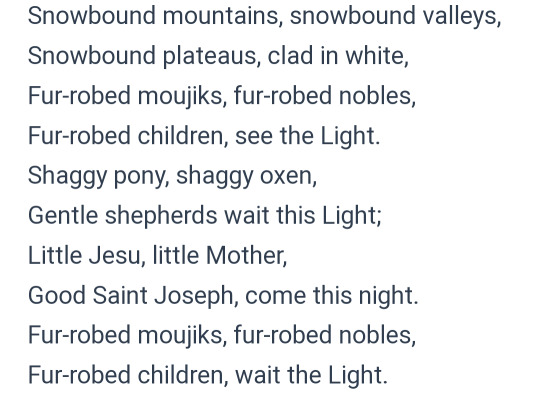
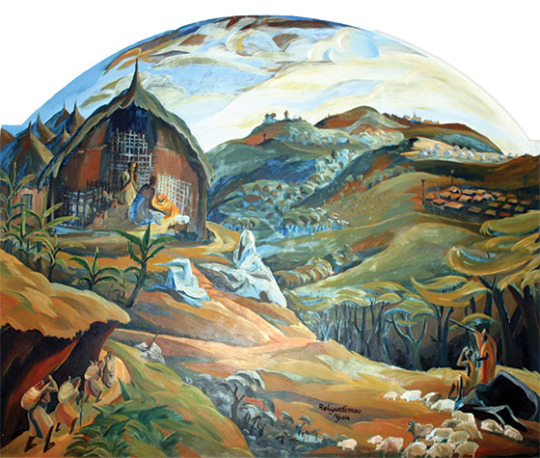
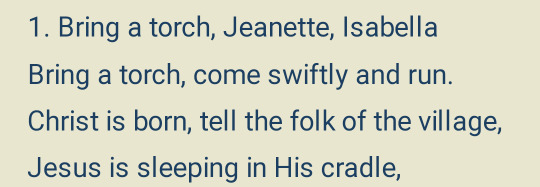


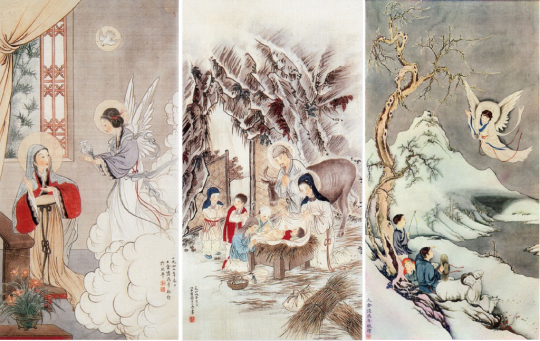
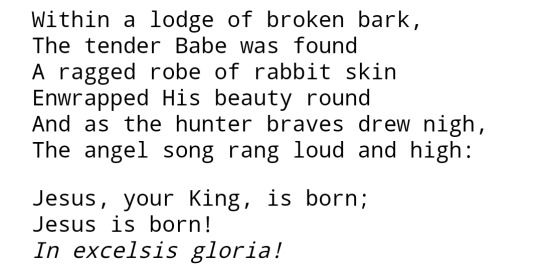
We see him come and know him ours
Russia: "Carol of the Russian Children," traditional // Kenya: The Nativity, Elima Njau // France: "Bring a Torch, Jeanette Isabella," Nicolas Saboly // Haiti: Madonna and Child, Ismael Saincilus // Australia: "The Three Drovers," William James // China: Tryptic by Lu Hongnian // Canadian/Algonquian: "Huron Carol," Jean de Brébeuf
#the visual depictions are lovely#but what really gets me every time are the little cultural details in the music#music that tells the story of the Nativity while placing it in a world that's familiar to the listener#fur robed moujiks on snowboard plateaus in place of middle eastern shepherds#bark lodges instead of stables and rabbit skin in place of swaddling clothes#wandering hunter and chiefs from far off places instead of shepherds and wise men (man i love the Huron Carol)#and little french girls running to gather the village to come see Jesus#it's easy for an excess of historical concern to make Jesus feel distant and far off#/I know/ that Jesus was born in the ancient near east and have had my fill of books and sermons and the like unpacking the implications#I've laughed with my friends and family at the wild inaccuracies of Nativity sets and tellings#the crazy blonde mary in the kids nativity set at Walmart#what is that alpaca doing at the living Nativity don't they know those are south American?#yada yada#and then i look at these carols and think. it's okay not to get mired in the history. good even#yes Jesus entered into time and space in a very specific manner#but he also came for all of us#as another carol says: we see him come and know him ours#i just think this practice is lovely#that the impact of the Incarnation was such that it send little french girls running to their villages#and drew algonquin hunters and russian peasants to the manger to see him#it's the great crowd of witnesses in a way#all of us together preparing him room throughout all the corners of the earth#in Bethlehem that night it was only the shepherds who got to see him#but in spirit it was all of us#because it's just like the angel said:#good news of great joy which will be to all people#to all people#starting with the shepherds and going out to all the earth#unto us a child is born#intertextuality
80 notes
·
View notes
Text
could never shut my brain off watching my favorite old animated movies bc road to el dorado is one of them
#my beloved spaniards (with american and british accents)#who have come to scam a hidden golden city for all theyre worth (who are darker skinned/more naive/less imperialized)#im so glad the ACTUAL villain conquistadors never find the place. who are the real enemies here. not the two white boys#and chel was there. and yes she did need to be drawn like that and it says nothing about anything at all.#oh and the villainization of native spiritual practices & witchcraft. cant forget that too! :D#UUUUUU I LOVE THIS MOVIE SO MUCH BUT IT EXISTS IN THE CONTEXT#stop reading my posts
8 notes
·
View notes
Text
The children yearn to reconnect with their lost cultural identity
#being raised americanized fucked me up#like. speaking danish died with my great grandmother.#never grew up with even a hint of irish culture.#speaking spanish and practicing native spiritual traditions died with my other great grandmother.#especially not being able to speak spanish with my other mexican friends was/is HEARTBREAKING#absolutely didn't help that they'd make fun of me for it#the heaviest of sighs
3 notes
·
View notes
Text
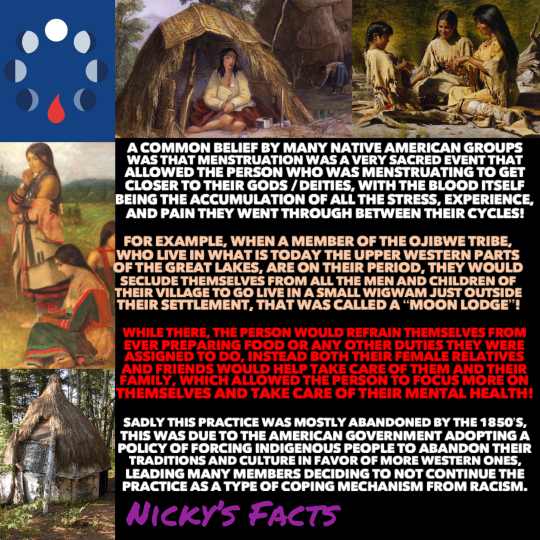
By providing the proper care for women and those who menstruate, whether it traditional or modern, empower them with the confidence and support that they need!
🩸
#history#menstruation#ojibwe#moon lodge#mental health#indigenous history#great lakes#period health#united states#native american#women empowerment#femininity#menstruation history#people who menstruate#womens health#menstrual care#womens history#indigenous americans#traditional practices#period cramps#american history#indigenous culture#menstrual health#menstrual cycle#native american history#nickys facts
39 notes
·
View notes
Text
i don’t know much IPA and have tended to think it’s most useful for linguistics/comparing languages more than in reference to a specific language, but i’m really starting to see the upsides because this discussion on how to pronounce ครับ* is killing me 😭

well. none of those words are right but it's not like i have a better idea…
not judging the op at all! they’re asking a reasonable question (‘english speaker’ eliding over some number of relevant regional distinctions in pronunciation notwithstanding) that just does not have a good answer because languages do not all make the same set of distinctions around sounds.
(the suggestion to listen to how people say it is of course right and arguably the only perfectly correct answer.)
*the male polite particle in thai, most commonly transliterated ‘krab’ but of course the whole problem here is that that doesn’t quite tell you how to pronounce it unless you’re already familiar with the transliteration system or know it from hearing it...
#‘cup’ might be closest in my accent? ‘crop’ or ‘crab’ are more correct in a transliteration sense#and yet i think if you tell a (northeast american) native english speaker to say those english words. they’ll be farther away#the r is complicated and may or not be audible in practice#but also there are other interactions that aren’t quite captured by the bare consonants and vowels#e.g. english doesn't have a short/long vowel distinction or tones#but while ‘cup’ isn’t quiiite the right vowel it’s close and i think it’s more likely to be said closer to a short sound and high tone#maybe not though! the distinctions aren't marked in english and it’s probably idiosyncratic depending on the speaker#anyway i think the question of ‘closest pronunciation’ is honestly quite interesting#but really there is just not going to be a substitute for hearing it#may.txt#language tag
4 notes
·
View notes
Text
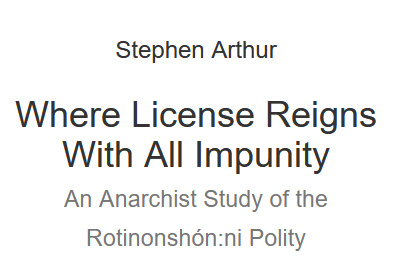
Anarcho-Indigenism
While Bookchin might have not recognized similarities between his own anti-authoritarian politics and the traditional Rotinonshón:ni polity, some Rotinonshón:ni have also brushed off such comparisons. In an essay attempting to dissuade Rotinonshón:ni from participating as allies in the protests against the Free Trade Area of Americas (FTAA) meetings held in April 2001 in Québec City, Teiowí:sonte argued that the “platform and aspirations among some of these groups, particularly the Anarchists, are to eliminate any structured authority. Anarchism is a Greek word meaning without government. Their beliefs are contradictory to that of the Kaianere’kó:wa and actually threaten the existence of Haudenosaunee governments if these groups ever attain their ultimate goal.” [117]
At least one of Teiowí:sonte’s comrades in the Wasáse Movement, Taiaiake, might disagree with Teiowí:sonte’s interpretation of anarchism. Others, like Ward Churchill, have seen commonalities between Indigenism and Anarchism. [118] Taiaiake, coming from a traditionalist Kanien’kehá:ka perspective but also an academic career in political science, history and indigenous governance, argues explicitly for an “anarcho-indigenism.”[119] Far from seeing anarchism as a hindrance to the reestablishment of the Kaianere’kó:wa as the polity of modern Rotinonshón:ni, Taiaiake sees anarchism as the kind of political philosophy, “fundamentally anti-institutional, radically democratic, and committed to taking action for change,”[120] that is needed to combine with the indigenous vision of a good society. Not only do the commonalities exist in terms of philosophy, but they are increasingly being seen on the levels of strategy and praxis:
“There are philosophical connections between indigenous and some strains of anarchist thought on the spirit of freedom and the ideals of a good society. Parallel critical ideas and visions of post-imperial futures have been noted by a few thinkers, but something that may be called anarcho-indigenism has yet to develop into a coherent philosophy. There are also important strategic commonalities between indigenous and anarchist ways of seeing and being in the world... a rejection of alliances with legalized systems of oppression, non-participation in the institutions that structure the colonial relationship, and a belief in bringing about change through direct action, physical resistance, and confrontations with state power. It is on this last point that connections have already been made between Onkwehonwe groups and non-indigenous activist groups in the anti-globalization movement.” [121]
In defining universal indigenous principles, Taiaiake’s position is not only anti-statist but also explicitly anti-hierarchical: “Traditional indigenous nationhood stands in sharp contrast to the dominant understanding of ‘the state’: there is no absolute authority, no coercive enforcement of decisions, no hierarchy, and no separate ruling entity.” [122] He goes so far as to call continued cooperation with the state as “morally unacceptable.” [123]
Perhaps anarchism and the struggle of other social movements have had effects upon indigenism as well. While Taiaiake is a passionate proponent of a return to traditional polity, he acknowledges that “it’s not going to look the same as before. Our ideas about injustice might even possess and lead us to fight our own people and the injustice they are bringing on through the instrument of their form of government.” [124]
The similarities between anarchism and indigenism are being increasingly noticed, as anarchists find themselves in solidarity with indigenous struggles from Oaxaca to Ohswé:ken. Some have gone so far as to argue that indigenism is the ancestor of anarchism[126]—a claim that seems all that more plausible when anarchists study the traditional polity of the Rotinonshón:ni. Teiowí:sonte has called the traditional polity of the Rotinonshón:ni the “original socialist paradise,” partly because of its influence on Marx’s socialism.[127] Feminists in the U.S. have acknowledged the influence of Rotinonshón:ni on their vision of equality. The traditional polity of the Rotinonshón:ni has demonstrated that cultural evolution is not unilinear. There is an alterative to a stratified, hierarchical, patriarchical society and an exploitive economy—but we must build it now, and not wait idly for some far-off future when material culture has completed its development. There is an alternative to kleptocracy. It is possible today!

“The Evergrowing Tree” belt [125]
#Anarcho-Indigenism#precolonial#precolonial history#first nations#indigenous#Iroquois#mohawk#history#anthropology#true history#Rotinonshón:ni Polity#Rotinonshón:ni#Rotinonshon:ni Polity#us politics#us history#Native Americans#Northeastern Anarchist#Six Nations#anarchism#anarchy#anarchist society#practical anarchy#practical anarchism#resistance#autonomy#revolution#communism#anti capitalist#anti capitalism#late stage capitalism
12 notes
·
View notes
Text

Bonne fête de la Sainte Jean Baptiste!
The Saint John (wolastoq) river being important to both my quebecois and maliseeet ancestors makes this time of year very….interesting haha
One of the names for my father’s people was “people of the beautiful river” (wolastoqiyik)
(((Excuse my shitty french haha)))
#Saint John#fête du sainte jean baptiste#feast of Saint John#Native American#mixed heritage#Maliseet#quebecois#folk Catholicism#sabbath#fire in water#headless#headless saint#my practice
7 notes
·
View notes
Text
21 pagan new Yorker with the entirety of his identity in bio "you do not understand leftism"..............
#sorry but like.#maybe you should reconsider your understanding of leftism as well#augh scrolled down a bit. im taking the word ''marginalized'' from everyone's hand until you learn what it means#culturally christian people from the imperial core roleplaying as viking while appropriating practices from native Americans arent.#hippies 2.0 arent an oppressed minority come on
8 notes
·
View notes
Note
I love totk, love it with all my heart. But even I feel a bit disappointed with a lot of the aspects.
The one that gets me the most is just, the Zonai in general?
When I think back to botw, I remember all the wild and exciting theories and thoughts about what the Zonai could be.
I remember theories that they were some iteration of the Kokiri because the spiral symbols were similar, and a lot of the structures were in forests. I remember everyone being so sure that they were a warlike race because the Barbarian Set were found exclusively in the Lomei Labyrinths. Everyone was wondering what the owls, boars and dragons meant to them.
Then we actually get to see the Zonai, the big mystery of botw and there's just.
Nothing.
All we learn is: there’s 2 of them, they had advanced tech, and they had magical macguffins.
It feels so hollow knowing there was so much potential for another race to be introduced to the Zelda universe and we essentially get Sheikah 2.0 with some Mesoamerican vibes.
We don't even learn anything about them as a race, like where the rest of them went or how they were accepted so easily as rulers or why they're called "Secret Stones" when it seems like everyone knows what they are.
The only real upside to this total lack of info is that it lets people with actual creativity create headcanons and fits without having to worry about being canon compliant.
Just rings hollow.
Yeah, I absolutely feel that. I think the Zelda theorists, and I both include myself and say this with all the love in the world, tend to overhype the specificity of things that tend to remain vague in Zelda (and sometimes that vagueness is great, because it's exactly what fuels us next!), but.... I have to agree that Zonais really didn't deliver on that aspect for me either.
To be frank, I was never super into Zonai lore (because I was never super into BotW lore, but it's really on me and not at all a criticism or anything, the community and I missed each other on the hyperfocus moment), but I got super interested to see the Mesoamerican vibes going on in this game to the point where, when Nintendo dropped the Gameplay trailer and I got... honestly pretty underwhelmed (like design wise that sounded great and fun but it kind of cemented the sort of playground direction they were going with, and it got me pretty worried about other aspects, namely the story :) ), I decided to spoil myself with the leaked artbook just to give me... something to latch onto I guess? Because I really wanted to get excited! And the Mesoamerican vibes did the trick: I got super curious about what that could mean, what the Zonais would bring to the table culture-wise, what sort of cool legends involving them would be investigated, etc... Also it just wasn't a kind of setting that Zelda ever really explored (and still has not, in my humble opinion), so it kind of quieted down my worries of having a game that looked so similar to BotW in terms of artistic direction, to the point where I became afraid it wouldn't have anything different to say (which... ended up kind of being my final opinion, unfortunately).
I think the Zonais both lost a lot of their mystery while not really clarifying anything? I kind of would have loved them to remain otherwordly figures, almost? Or maybe to just have hints of a culture that would be very different to Hyrule's, instead of basically the same thing but with robots and things fly around also --I would have loved deeper implementation of Mesoamerican mythos or cultural elements, instead of it remaining.... kind of a costume, honestly? Like, what even is zonai culture, beyond the automation (which was already kind of the Sheikah's thing anyway?) Where do the stones come from? Where are the other zonais? I'm not asking for direct answers, but just enough vagueness, murals, legends, ancient spirits to set the theorists' brain on fire. The Depths would have been amazing to hint at more (and doubly so for the Sky Islands), but right now, in spite of having spoken to two different live (kind of) Zonais, I still have zero idea what their deal is. They could have been hylians and nothing would have really changed.
So, yeah! Agreed! And sorry for the late ask aaa
#asks#tloz#totk#totk critical#totk spoilers#zonai#thanks for the ask!!#the last part being why I really do not buy the whole “mesoamerican coded” reading of totk#because??#like if I dress up as a native american for a party it doesn't make me native coded it just makes me rude#I would love for them to actually be mesoamerican coded (in a good rich interesting way)#and invoke the complexity of their power structure their religious practices their economical exchanges... make chocolate super valuable!!#or for ganondorf to be this invading force mirroring the spanish invasion#(given the gerudos in oot loosely referenced the invasion of spain that could be interesting too)#like then sure!!#but here it's just...ganondorf is the underdog power-wise!! so the comparaison doesn't go anywhere!!#plus he was the one living in Hyrule first! the game establishes this!! nobody asked the game to do this but it does anyway!!#anyways!!! sorry!!!#got a little offtrack here oopsi oopsi#totk storytelling confusing
37 notes
·
View notes